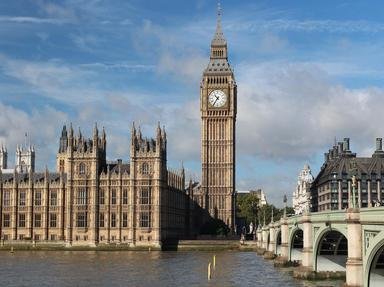Quiz Answer Key and Fun Facts
1. Henry Pelham, British Prime Minister from 1743 to 1754, was succeeded in the job by Thomas Pelham-Holles, his elder brother. Pelham-Holles was more commonly known as the duke of which northern English city?
2. The first father-and-son pairing to both hold the position of British Prime Minister were the Earl of Chatham and his son. The son was only 24 years old when he first became Prime Minister in 1783 and was known as 'the Younger' to differentiate him from his father. What given name and surname did they share?
3. George and William Grenville were the second father-and-son pair to both become British Prime Minister. George Grenville is best remembered for introducing which Act of 1765 which was extremely unpopular in the then British American colonies and was hastily repealed a year later?
4. The Duke of Portland, son-in-law of former Prime Minister the Duke of Devonshire, was Prime Minister twice, first in 1783 and then again in 1807 to 1809. On both occasions he was only the titular head of the government, with the actual power being wielded by his ministers. His second ministry collapsed after which two ministers took part in an infamous duel?
5. The first name Spencer was shared by two related British Prime Ministers. One was the famously assassinated Spencer Perceval, while the other was Spencer Compton, the 1st Earl of Wilmington. Which of the following statements applies to Spencer Compton?
6. In 1791, Earl Grey had an affair with the daughter-in-law of the Duke of Devonshire and fathered her illegitimate daughter, Eliza Courtney. The duke was Prime Minister from 1756 to 1757 but during which period did Earl Grey hold the same title?
7. The first and second British Prime Ministers of the 20th century were an uncle and nephew combination. The nephew's first name was Arthur, in honour of his godfather the Duke of Wellington (another former Prime Minister), but what was his surname?
8. Sir Anthony Eden was British Prime Minister from 1955 to 1957. His second wife was the niece of which other Prime Minister, particularly remembered for his war-time leadership and inspirational speeches?
9. Britain's first female Prime Minister, Margaret Thatcher, was distantly related to the man who replaced her. Her relative presided over Britain's involvement in the 1991 Gulf War, the signing of the Maastricht Treaty, and 'Black Wednesday', but what was his name?
10. The Duke of Grafton, a descendent of King Charles II, was British Prime Minister from 1768 to 1770. A descendent of King William IV also became Prime Minister as the head of a coalition government elected in 2010. What is the name of this very distant cousin of the Duke of Grafton?
Source: Author
Fifiona81
This quiz was reviewed by FunTrivia editor
stedman before going online.
Any errors found in FunTrivia content are routinely corrected through our feedback system.

